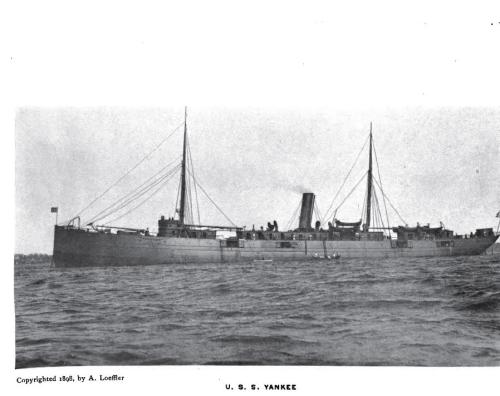NewYork Naval Militia Turns 120 on June 23 2011
| DMNA Home page | More News Stories |
Dated: Thu, Jun 23, 2011
The New York Naval Militia-a force a quarter century older than the Navy Reserve-celebrates its 120th birthday as an integral part of New York’s Military forces on Thursday, June 23. The first unit of the New York Naval Militia was mustered into service as an organized part of New York’s armed forces on June 23 1891 as the 1st Battalion Naval Reserve Artillery, a unit of 15 officers and 190 enlisted sailors. Today the New York Naval Militia consists of 2,500 members, 95 percent of them members of the United States Navy Reserve, the United States Marine Corps Reserve, and the United States Coast Guard Reserve; along with a small number of retired service members and volunteers. “Today’s New York Naval Militia continues a tradition that includes service in the Spanish American War, and World Wars One and Two by members of our state’s Naval Service,” said Major General Patrick Murphy, the Adjutant General of New York. “The men and women of the New York Naval Militia bring unique skills and knowledge to help our state when needed.” The New York Naval Militia was organized when the United States Navy was small and the Navy Reserve did not exist (it was created in 1916). A law approved in 1889 authorized the New York Naval Militia, but the first Naval Militia unit took almost two years to organize, form, and have accepted for state service. In the 1890s and early 20th Century, Naval Militia members trained on old ships set aside for that purpose by the Navy. The first state duty the Naval Militia performed was in 1892 when they governor called on them to help quarantine cholera patients being landed from infected immigrant ships. During the Spanish- American War the New York Naval Militia crewed two ships used as auxiliary cruisers to scout out the movements of the Spanish fleet around Cuba. Naval Militia members served in the Navy in World War I and World War II and in Korea. At one time New York had Naval Militia armories that served the same purpose as facilities used by the Army National Guard. Following World War II and the restructuring of Naval Militia’s these facilities were turned over to the Navy Reserve. Today the New York Naval Militia maintains a fleet of nine patrol boats in its Military Emergency Boat Service, which stands ready to work with the Coast Guard, the Border Patrol, and federal, state, and local law enforcement agencies as directed by the governor. Individual members of the Naval Militia stand ready to serve New York in a State Active Duty status when called upon by the governor and bring the skills they have acquired through military service and training. New York Naval Militia members served during New York’s response to the Sept. 11, 2001 attacks on New York City, providing trained forces for security service in New York City and crews to man a patrol craft off the Indian Point Nuclear Power Plant. New York Naval Militia members respond in all state emergencies when the governor activities the National Guard. On an almost daily basis, the Military Emergency Boat Service provides a state of the art patrol boat and crews to ferry United States Coast Guard boarding parties onto ships waiting outside New York Harbor. During the summer months the Naval Militia boat crews assist the Border Patrol in providing immigration and customs control on Lake Champlain. New York is one of a handful of states-including Ohio and California-which still maintain an active Naval Militia. Potential Naval Militia Missions Include: 1. Stationary Engineering -- The operation or restoration of vital utilities, such as power plants, water plants or sewage disposal plants.
2. Maritime Activities - The operation and maintenance of all types of vessels, such as tugs, fire boats, rescue craft, and patrol boats.
3. Support Activities - To provide communication, clerical, logistical, and medical services. 4. Security - To provide security support for State facilities, utility services, and vital supplies. 5. Construction Activities - To build, repair or demolish structures.
URL: https://dmna.ny.gov/news/?id=1308832192
216.73.216.158
Page Last Modified: Thu, Jun 23, 2011




